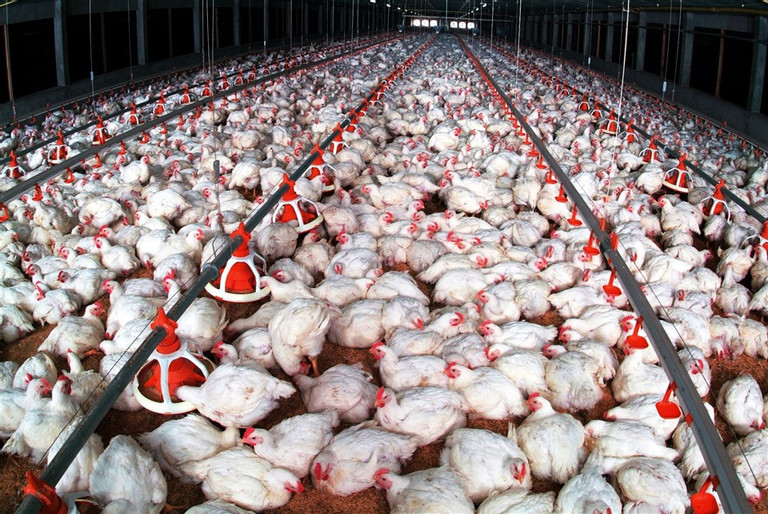
On December 15, Le Phuong Hai, owner of a fowl farm in Long Thanh district in Dong Nai province, said the chicken price moved up by several thousand dong per kilogram after it bottomed out in November when he heard that slaughterhouses planned to close early for Tet holiday.
This means that chicken prices will continue to go down towards Tet.
“In November, I had to sell chicken at VND21,000-22,000 per kilogram, which meant that I took a loss of VND20,000 for every 2.5 kilogram chicken sold,” Hai said.
Since the beginning of the year, chicken farmers like Hai have not made a profit. They have to sell chicken at a loss. The price once climbed to VND30,000 per kilogram, high enough to bring profit, but it existed for only several days before going down again.
As the losses have piled up, Hai has to narrow his farming scale from 500,000 to 300,000 fowl. The demand is weak as workers don’t have jobs, while catering companies have scaled down.
Meanwhile, Cambodian fowl have been exported to Vietnam with surprisingly low prices, just VND11,000 per kilogram.
Hai estimated that he has incurred a loss of VND4-5 billion so far this year.
Pig farmers also complain they are incurring big losses despite the high sales season.
Dinh Thi Phuong, the owner of a farm in Binh Duong with 600 pigs, said she is selling pigs at VND47,000 per kilogram, which means a loss of VND600,000 for every pig sold.
“Three days ago, I sold 50 pigs and incurred a loss of VND30 million,” Phuong said, adding that she has left breeding facilities idle after selling pigs because demand is low.
The Ministry of Agriculture and Rural Development (MARD) confirmed that pig prices dropped in November because of weak demand.
In the north, prices fell by VND2,000-3,000 per kilogram compared with October to VND49,000-50,000 per kilogram. The decrease of VND2,000 per kilogram has been reported for the central region and Central Highlands to VND48,000-50,000. In the south, the prices decreased to VND48,000.
With average live pig prices of VND47,000-51,000 per kilogram, farmers have taken a loss.
Oversupply
A report found that the total number of pigs in the country had increased by four percent by the end of November compared with the same period last year. The total pork output is estimated to reach 4.57 million tons in 2023.
Meanwhile, poultry numbers had increased by 3 percent, and poultry meat output was 2.08 million tons, 493,000 tons for beef, and 126,000 tons of buffalo meat.
Vietnam has spent $1.15 billion to import 572,110 tons of meat and products from meat in the first 10 months of the year, a 4.9 percent decrease in value and increase of 5 percent in export volume.
While increased domestic supply, exports were modest. In the first 10 months of the year, Vietnam exported 18,110 tons of meat, worth $89 million, up 20.3 percent in quantity and 37.1 percent in value compared with the same period last year.
The major exports were suckling pigs, whole frozen pigs, and other meat and edible meat by-products.
According to MARD Deputy Minister Phung Duc Tien, Vietnam has signed a protocol with Chinese GuangXi province on Vietnam’s export of animals and the construction of epidemic-free areas on the two sides of the border to boost the export of animals and animal products.
Nguyen Xuan Duong, chair of the Vietnam Livestock Association, said boosting exports is a good solution to ease pressure to sell products in the home market.
However, he warned that it will take a lot of time to open export markets for Vietnam’s husbandry products, and is even more difficult in the current context of epidemics.
Duong does not think livestock prices will increase in the time to come, because purchasing power in the domestic market is still weak, supply is on the rise, and more smuggled products are entering Vietnam.
“We need to control market supply, prevent smuggling, and control full-tax exports,” he said. “Once demand and supply is in balance, prices will recover."
Tam An